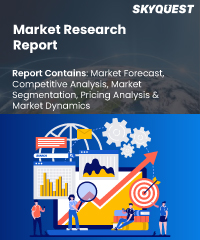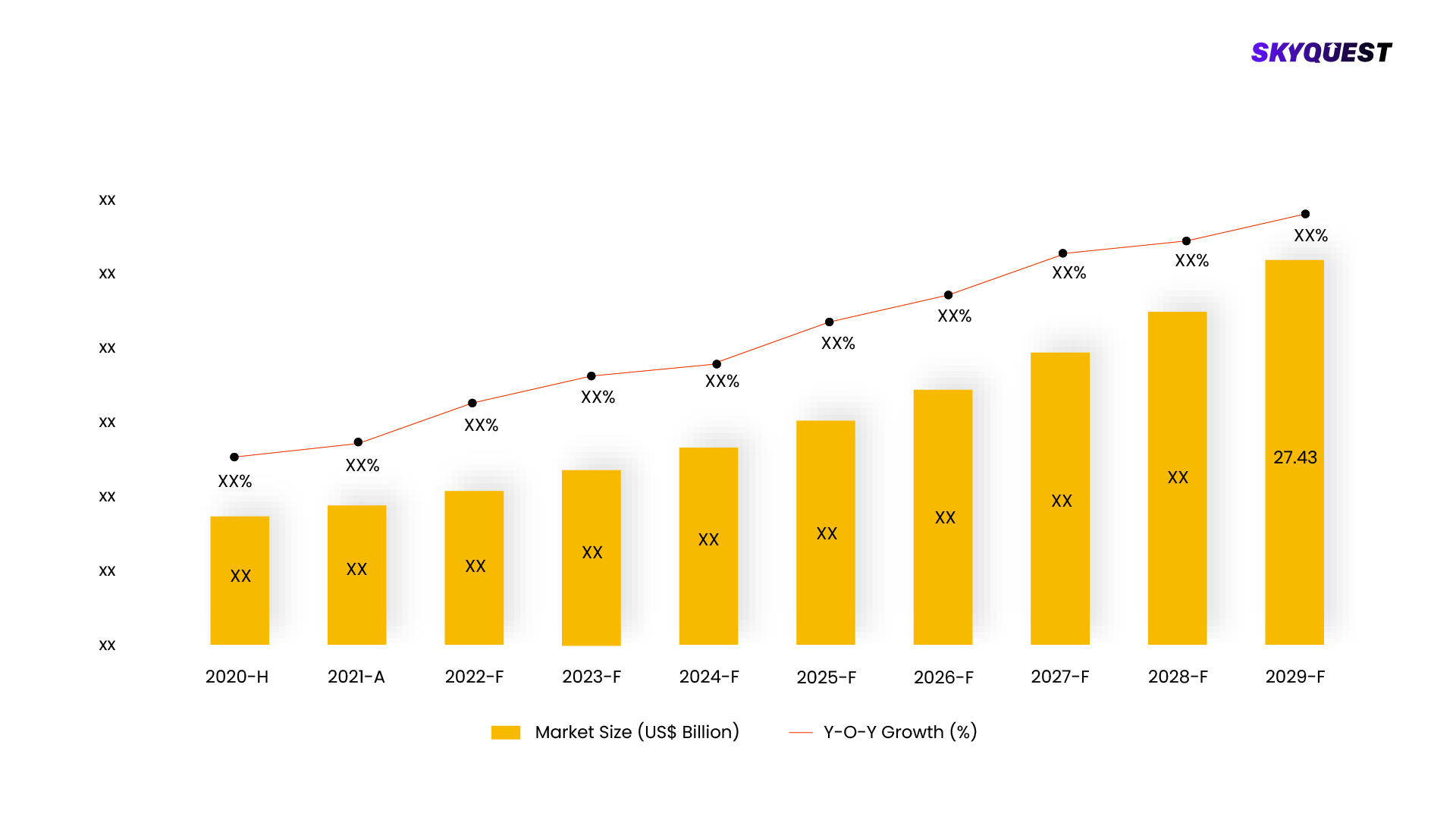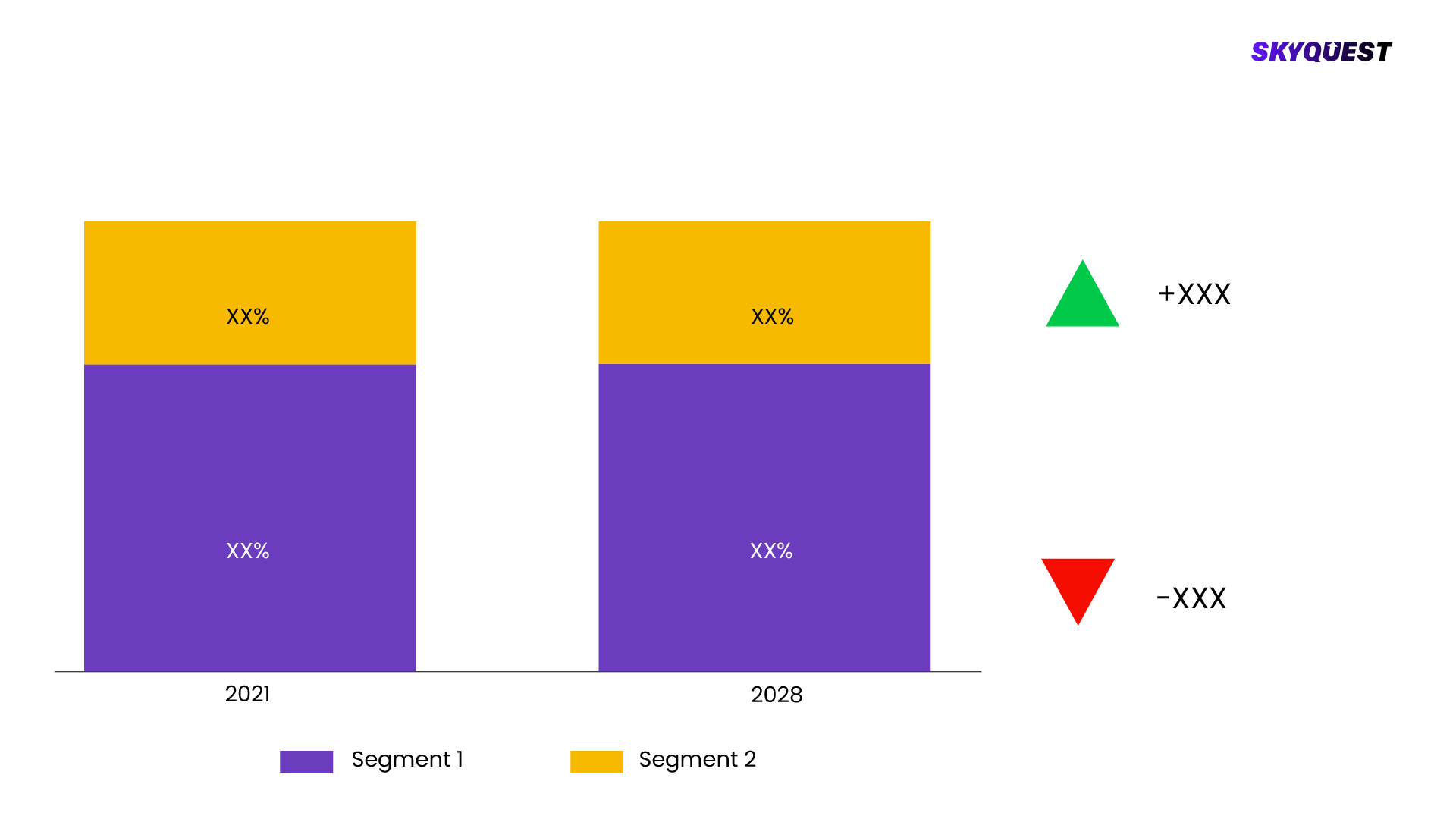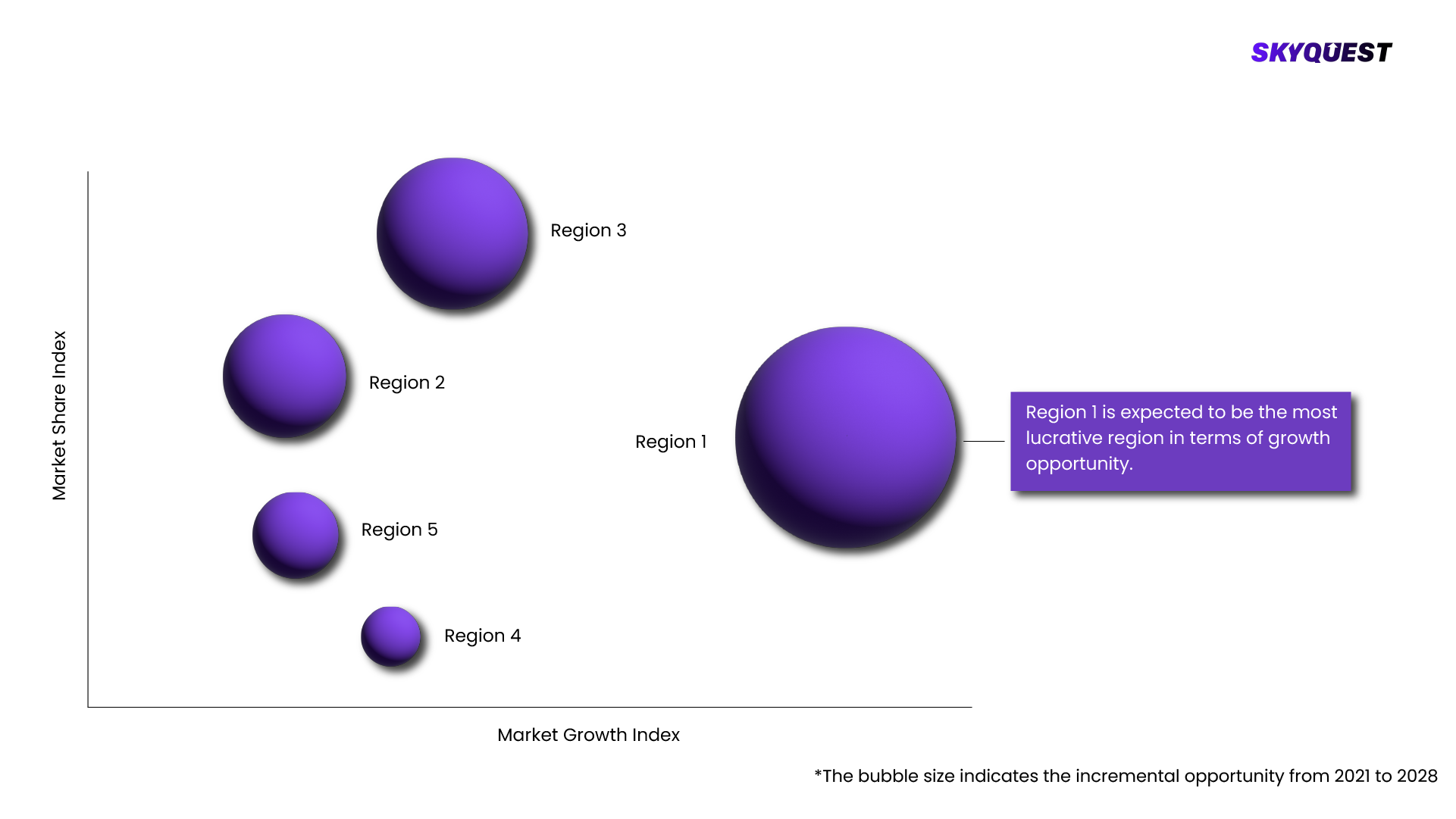
Antisense & RNAi Therapeutics Market
Report ID: UCMIG35I2240

Report ID:
UCMIG35I2240 |
Region:
Global |
Published Date: Upcoming |
Pages:
165
|Tables:
0
|Figures:
0
The global market for antisense & RNAi therapeutics commenced with an evaluation of USD 1.09 billion in 2018 and is anticipated to demonstrate a commendable compound annual growth rate (CAGR) of 7.5% throughout the forecast period. A significant catalyst for this growth is the innovative potential of antisense technology, which offers the means to manipulate gene expression, rendering it a promising avenue for treating a diverse range of ailments. Recognizing this potential, companies are strategically capitalizing on this opportunity by directing investments towards research and development in this sector. As the capabilities of antisense and RNAi therapeutics continue to unfold, the market is poised for sustained expansion, harnessing the potential to revolutionize disease treatment approaches.

This report is being written to illustrate the market opportunity by region and by segments, indicating opportunity areas for the vendors to tap upon. To estimate the opportunity, it was very important to understand the current market scenario and the way it will grow in future.
Production and consumption patterns are being carefully compared to forecast the market. Other factors considered to forecast the market are the growth of the adjacent market, revenue growth of the key market vendors, scenario-based analysis, and market segment growth.
The market size was determined by estimating the market through a top-down and bottom-up approach, which was further validated with industry interviews. Considering the nature of the market we derived the Pharmaceuticals by segment aggregation, the contribution of the Pharmaceuticals in Pharmaceuticals, Biotechnology & Life Sciences and vendor share.
To determine the growth of the market factors such as drivers, trends, restraints, and opportunities were identified, and the impact of these factors was analyzed to determine the market growth. To understand the market growth in detail, we have analyzed the year-on-year growth of the market. Also, historic growth rates were compared to determine growth patterns.
The Antisense & RNAi Therapeutics Market is segmented by Technology, Application, Route of Administration, Regional. We are analyzing the market of these segments to identify which segment is the largest now and in the future, which segment has the highest growth rate, and the segment which offers the opportunity in the future.

Antisense & RNAi Therapeutics Market is being analyzed by North America, Europe, Asia-Pacific (APAC), Latin America (LATAM), Middle East & Africa (MEA) regions. Key countries including the U.S., Canada, Germany, France, UK, Italy, Spain, China, India, Japan, Brazil, GCC Countries, and South Africa among others were analyzed considering various micro and macro trends.

SkyQuest's expert analysts have conducted a risk analysis to understand the impact of external extremities on Antisense & RNAi Therapeutics Market. We analyzed how geopolitical influence, natural disasters, climate change, legal scenario, economic impact, trade & economic policies, social & ethnic concerns, and demographic changes might affect Antisense & RNAi Therapeutics Market's supply chain, distribution, and total revenue growth.
To understand the competitive landscape, we are analyzing key Antisense & RNAi Therapeutics Market vendors in the market. To understand the competitive rivalry, we are comparing the revenue, expenses, resources, product portfolio, region coverage, market share, key initiatives, product launches, and any news related to the Antisense & RNAi Therapeutics Market.
To validate our hypothesis and validate our findings on the market ecosystem, we are also conducting a detailed porter's five forces analysis. Competitive Rivalry, Supplier Power, Buyer Power, Threat of Substitution, and Threat of New Entry each force is analyzed by various parameters governing those forces.
The Antisense & RNAi Therapeutics Market is being analyzed by SkyQuest's analysts with the help of 20+ scheduled Primary interviews from both the demand and supply sides. We have already invested more than 250 hours on this report and are still refining our date to provide authenticated data to your readers and clients. Exhaustive primary and secondary research is conducted to collect information on the market, peer market, and parent market.
Our cross-industry experts and revenue-impact consultants at SkyQuest enable our clients to convert market intelligence into actionable, quantifiable results through personalized engagement.
| Report Attribute | Details |
|---|---|
| The base year for estimation | 2021 |
| Historical data | 2016 – 2022 |
| Forecast period | 2022 – 2028 |
| Report coverage | Revenue forecast, volume forecast, company ranking, competitive landscape, growth factors, and trends, Pricing Analysis |
| Segments covered |
|
| Regional scope | North America, Europe, Asia-Pacific (APAC), Latin America (LATAM), Middle East & Africa (MEA) |
| Country scope | U.S., Canada, Germany, France, UK, Italy, Spain, China, India, Japan, Brazil, GCC Countries, South Africa |
| Key companies profiled |
|
| Customization scope | Free report customization (15% Free customization) with purchase. Addition or alteration to country, regional & segment scope. |
| Pricing and purchase options | Reap the benefits of customized purchase options to fit your specific research requirements. |
Executive Summary
Market overview
Parent Market Analysis
Market overview
Market size
KEY MARKET INSIGHTS
COVID IMPACT
MARKET DYNAMICS & OUTLOOK
Market Size by Region
KEY COMPANY PROFILES
For the Antisense & RNAi Therapeutics Market, our research methodology involved a mixture of primary and secondary data sources. Key steps involved in the research process are listed below:
1. Information Procurement: This stage involved the procurement of Market data or related information via primary and secondary sources. The various secondary sources used included various company websites, annual reports, trade databases, and paid databases such as Hoover's, Bloomberg Business, Factiva, and Avention. Our team did 45 primary interactions Globally which included several stakeholders such as manufacturers, customers, key opinion leaders, etc. Overall, information procurement was one of the most extensive stages in our research process.
2. Information Analysis: This step involved triangulation of data through bottom-up and top-down approaches to estimate and validate the total size and future estimate of the Antisense & RNAi Therapeutics Market.
3. Report Formulation: The final step entailed the placement of data points in appropriate Market spaces in an attempt to deduce viable conclusions.
4. Validation & Publishing: Validation is the most important step in the process. Validation & re-validation via an intricately designed process helped us finalize data points to be used for final calculations. The final Market estimates and forecasts were then aligned and sent to our panel of industry experts for validation of data. Once the validation was done the report was sent to our Quality Assurance team to ensure adherence to style guides, consistency & design.
Customization Options
With the given market data, our dedicated team of analysts can offer you the following customization options are available for the Antisense & RNAi Therapeutics Market:
Product Analysis: Product matrix, which offers a detailed comparison of the product portfolio of companies.
Regional Analysis: Further analysis of the Antisense & RNAi Therapeutics Market for additional countries.
Competitive Analysis: Detailed analysis and profiling of additional Market players & comparative analysis of competitive products.
Go to Market Strategy: Find the high-growth channels to invest your marketing efforts and increase your customer base.
Innovation Mapping: Identify racial solutions and innovation, connected to deep ecosystems of innovators, start-ups, academics, and strategic partners.
Category Intelligence: Customized intelligence that is relevant to their supply Markets will enable them to make smarter sourcing decisions and improve their category management.
Public Company Transcript Analysis: To improve the investment performance by generating new alpha and making better-informed decisions.
Social Media Listening: To analyze the conversations and trends happening not just around your brand, but around your industry as a whole, and use those insights to make better Marketing decisions.
The market for Antisense & RNAi Therapeutics was estimated to be valued at US$ XX Mn in 2021.
The Antisense & RNAi Therapeutics Market is estimated to grow at a CAGR of XX% by 2028.
The Antisense & RNAi Therapeutics Market is segmented on the basis of Technology, Application, Route of Administration, Regional.
Based on region, the Antisense & RNAi Therapeutics Market is segmented into North America, Europe, Asia Pacific, Middle East & Africa and Latin America.
The key players operating in the Antisense & RNAi Therapeutics Market are nsights , The antisense & RNAi therapeutics market size was estimated at USD 1.09 billion in 2018 and is expected to witness a CAGR of 7.5% during the forecast period. Antisense technology provides the opportunity to manipulate the gene expression and this is being considered as an effective treatment for various diseases. This opportunity is being cashed on by the companies and investing in R&D in this sector. , The possibility of studying gene function for disease management by regulating the gene expression by the malfunctioning gene, R&D carried out with respect to the treatment of uncommon neurodegenerative diseases, such as hereditary ATTR amyloidosis, are some of the other factors anticipated to drive the market. , Antisense and RNAi therapeutics enable specific and highly effective gene silencing, based on this factor, a fair number of gene silencing drugs are in the late-stage of development. The market is expected to grow in the forecast period owing to a number of companies that are into the development of molecules based on antisense technology. , Collaboration activities between the pharmaceutical companies and Contract Research Organizations (CROs) working on drug delivery are expected to have a positive impact on the antisense & RNAi therapeutics market growth. However, overcoming the challenges like unpredictable activity from the molecules and other delivery-related complications would prove to be the market changing development of antisense therapeutics. , In January 2016, Ionis Pharmaceuticals (previously Isis Pharmaceuticals) initiated a Phase-I study of ISIS-HBV-L Rx in collaboration with GSK Pharmaceuticals for the treatment of Hepatitis’s B viral infection. Another collaboration by Ionis pharmaceuticals with Akcea Therapeutics has led to the approval of the world’s first antisense-based molecule “Tegsdi” by the FDA and the European Commission in 2018. , However, there are many challenges associated with emerging antisense technology (and RNAi). One of the prominent bottlenecks is the drug delivery to the intended site. Drug delivery to the nervous tissues is one of the problems as the drug has to pass the blood-brain barrier. Companies are coming up with solutions to overcome these challenges. , The toxic effects caused is another challenge for the use of this technology. Determining the right dosage and vector for drug delivery of an antisense molecule is one of the most important steps to ensure safe administration. Companies have also faced rejections from the regulatory bodies. For instance, Akcea’s Waylivra, an antisense molecule to treat familial chylomicronemia syndrome was rejected by the FDA. These factors would push companies to develop better vectors, delivery solutions, and compositions. , Technology Insights , Antisense RNA has led the market in terms of revenue generation. These molecules are being tested to prevent disease onset and to halt the disease progression. Recent studies have shown that molecules with the use of antisense technology being trailed for spinal muscular atrophy and amyotrophic lateral sclerosis have shown promising results. Additionally, many other antisense technologies and oligonucleotide molecules are being tested for the treatment of non-neurodegenerative disorders. For instance, antisense-mediated exon skipping for Duchenne muscular dystrophy. , Application Insights , The rising need for the cure and prevention of diseases like cancer, HIV, and other diseases caused by mutating viruses is anticipated to influence the usage rate of oligonucleotide products. An increasing number of clinical trials for the oligonucleotide drugs exhibit that the field is rapidly expanding. For instance, Ionis Pharmaceuticals alone has 4 molecules in pipeline and 2 approved molecules in the European Union and 1 in the U.S. , Substantial pipeline for cancer therapies by companies and institutes such as Enzon Pharmaceuticals (Santaris Pharma), University of Texas, OncoGenex, Isarna Therapeutics, Astrazeneca (Ionis Pharmaceuticals), and INSYS Therapeutics, Inc. are expected to drive the market. In addition, many companies have invested in R&D for nanocarriers to deliver oligonucleotides for cancer treatment, which is expected to contribute to cancer management. , Nanocarriers can minimize the toxicity of these oligonucleotides. However, considerable bottlenecks of these nanoparticle systems are that they are influenced by inter and intra-tumor heterogeneity. This in turn has increased the need for efficient tumor targeting vectorization systems and multiple genes targeting oligonucleotide drugs. This need for newer and safer delivery systems for cancer and other viral disease management is expected to propel the market growth. , Route of Administration Insights , Route of administration is one of the most important aspects of any genetically modified molecule. The efficacy of these molecules varies based on the method of administration, the vector used for the genetically modified molecule, type of molecule for injection. Most of the studies that in progress use largely employ attenuated viral particles or bacterial cells and are injected intravenously for the treatment. , Scientists are developing novel delivery systems like nanocarriers, to promote the in-vivo delivery of the oligonucleotides. Nanocarriers are known to enhance the bioavailability, carrying capacity of siRNA payload and they provide high interaction with the target cells. Another advantage of nanoparticles as carriers is that according to their charge they can interact with blood proteins to incite toxicity or even affect biodistribution. , Regional Insights , The U.S. has a number of RNAi therapeutics that are in developmental pipelines. A number of biotechnology companies have made considerably high investments for RNAi therapeutic development. Big pharmaceutical developers have entered into collaboration agreements or licensing deals with a number of smaller firms in an attempt to capitalize on the expected growth in revenue that this market can have over the forecast period. For instance, AstraZeneca’s agreement with Ionis pharmaceuticals is one of the big deals that are investing heavily in antisense technology , Since the discovery of RNAi in, there have been numerous avenues of treatment development using RNAi, however, the market has picked up very little over the past decade due to the complexities in delivery methodologies related to RNAi. The development of newer nanotechnology-oriented methods has re-infused the market with a high potential to grow over the forecast period. , A number of drug candidates under clinical trials have shown favorable results and are progressing through the development phases. Assuming that such trials continue to show positive results, it can be expected that the North American market will witness considerable growth in demand over the forecast period. , Antisense & RNAi Therapeutics Market Share Insights , These companies are involved in the development of RNAi therapies and platforms that offer medicines, diagnostics, and personalized treatment options for key diseases. Alnylam Pharmaceuticals, Ionis Pharmaceuticals, Akcea Therapeutics, Quark Pharmaceuticals, and Gene Signal are several other companies with stronger pipeline portfolio. , KEY MARKET SEGMENTS, By Technology, RNA Interference , siRNA , miRNA , Antisense RNA , By Application, Oncology , Cardiovascular Diseases (CVDs) , Respiratory Disorders , Renal Diseases , Neurodegenerative Disorders , Genetic Disorders , Infectious Diseases , Other , By Route of Administration, Pulmonary Delivery , Intravenous Injections , Intra-dermal Injections , Intraperitoneal Injections , Topical Delivery , Other Delivery Methods , By Regional, North America , The U.S. , Canada , Europe , Germany , U.K. , Asia Pacific , Japan , China , Latin America , Brazil , Middle East & Africa , South Africa , KEY MARKET PLAYERS, GSK , Sanofi-Genzyme , Alnylam Pharmaceuticals , Marina Biosciences , Benitec Biopharma".
Want to customize this report? This report can be personalized according to your needs. Our analysts and industry experts will work directly with you to understand your requirements and provide you with customized data in a short amount of time. We offer $1000 worth of FREE customization at the time of purchase.

Report ID: UCMIG35I2240
sales@skyquestt.com
USA +1 351-333-4748